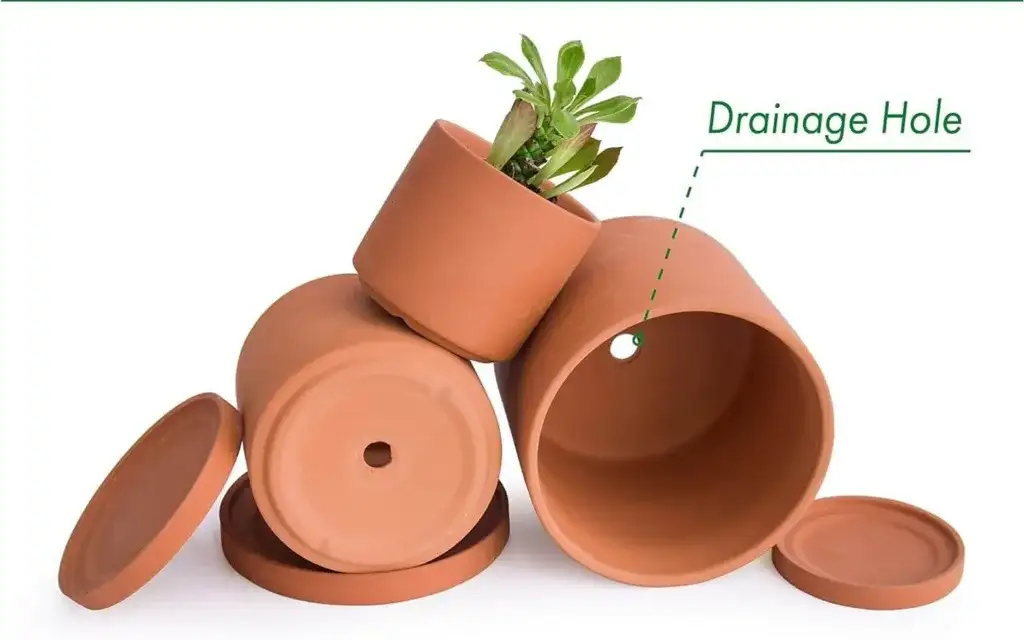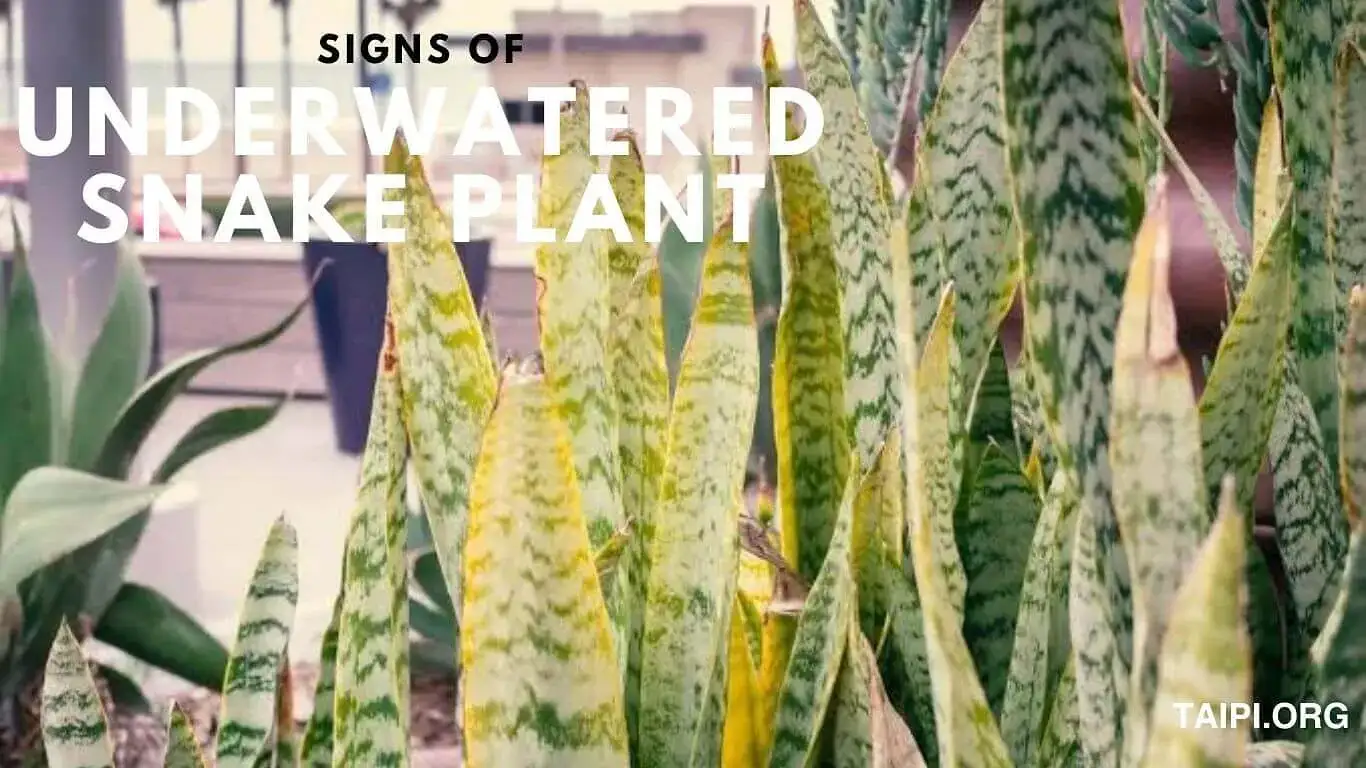Signs of an Underwatered Snake Plant + How to Revive It Fast
SNAKE PLANTS (Sansevieria) are known for their resilience and ability to tolerate a variety of conditions, including periods of neglect. However, they can still show signs of stress when underwatered. So, how do you tell if your favorite plant lacks water? This guide shows the seven undisputed signs of an underwatered snake plant. In addition, it will talk about how you can revive an underwatered snake plant, to restore its glory.
But first, this is how to tell your snake plant is not receiving enough water:
An underwatered snake plant will exhibit leaves that display wrinkles and curls, often accompanied by brown tips due to dehydration. As the plant continues to dry up, there is a risk of it toppling over, and prolonged exposure to dry soil may lead to its demise.
To swiftly rejuvenate an underwatered snake plant, relocate it to a shaded environment and immerse the entire pot in water. This comprehensive soaking will facilitate the plant’s rehydration and expedite its revival process.

The Difference in Signs Between an Underwatered and an Overwatered Snake Plant
Here’s a table outlining the key differences between the signs of an underwatered snake plant and those of an overwatered snake plant:
| Signs of Underwatered Snake Plant | Signs of Overwatered Snake Plant |
| Leaves are drooping or curling. | Leaves appear soft, mushy, or yellow. |
| Soil is dry and hard to the touch. | Soil is consistently wet or waterlogged. |
| Lower leaves are the most affected. | Upper leaves show symptoms first. |
| Leaves may become thin or wrinkled. | Root rot may occur, causing a foul odor. |
| Growth is slow, and the plant may appear stunted. | Fungus gnats or mold may appear on the soil surface. |
| Aerial roots may start to form. | Black, slimy roots are indicative of root rot. |
7 Irrefutable Signs of an Underwatered Snake Plant
Now, let’s look at how you can identify the signs of an underwatered snake plant. Understanding these signs can help you adjust your care routine accordingly and keep your snake plant healthy.
1. Dry Soil
Check the soil regularly, and if it feels consistently dry, your snake plant may need more water.
2. Wilting
Underwatered snake plants may exhibit wilting or drooping leaves. This is a common sign of water stress.
3. Yellowing Leaves
The leaves of an underwatered snake plant may turn yellow, starting from the tips and moving towards the base. This is often a result of insufficient water reaching the leaves.
4. Leaf Curling
To conserve water, the leaves may start to curl or fold inward.
5. Slow Growth
Snake plants are generally slow-growing, but if you notice a sudden halt in growth or stunted development, it could be a sign of insufficient water.
6. Brown Tips
While brown tips can also be a sign of overwatering or other issues, in the case of underwatering, the tips might turn brown and crispy due to a lack of water.
7. Thin, Wilted Appearance
The whole plant may take on a thin and wilted appearance when it’s not getting enough water.
Practical Steps to Revive an Underwatered Snake Plant
Reviving an underwatered snake plant involves gradually reintroducing proper watering practices and providing the plant with the care it needs.
Here are practical steps to revive an underwatered snake plant:
1. Assess the Damage
Examine the leaves and soil to understand the extent of dehydration. Trim any severely damaged or dead leaves with clean, sharp scissors or pruning shears. Cut them at the base.
2. Water Your Plant

Water the snake plant thoroughly but avoid overwatering. Ensure that water drains freely from the bottom of the pot.
Allow excess water to escape, and empty the saucer beneath the pot if there is standing water.
3. Check the Soil Moisture
Monitor the soil moisture regularly. Stick your finger into the soil up to an inch (2.5 cm) deep. Water again when the top inch of soil feels dry.
Adjust the watering frequency based on the environmental conditions, such as temperature and humidity.
4. Correct the Watering Schedule
Establish a consistent watering schedule. Snake plants prefer to dry out between waterings, so avoid keeping the soil constantly wet.
Water more frequently during the growing season (spring and summer) and reduce watering in the dormant season (fall and winter).
5. Trim Troubled Leaves Carefully
Get rid of the sad-looking, dead, or really brown leaves at the bottom of your plant. This helps stop any rot from spreading to the rest of the plant. Use gloves and a clean, sharp knife to cut them off, so you don’t accidentally spread any infection, especially if your plant is sick from root rot.
6. Give Your Snake Plant a Nice Soak
Snake plants need a good, long soak to stay healthy and avoid droopy or curly leaves. They store water in their leaves to survive dry spells. If your plant is super thirsty, take it out of its pot and let it soak in a tub of clean water.
This helps the roots absorb all the water they need and keeps the leaves from losing too much moisture. Ensure the leaves are hydrated, and the cells inside perk up.
7. Shower Your Snake Plant with Mist
Another way to perk up your thirsty snake plant is by misting its leaves. You can do this using a spray bottle to give the leaves a good misting. This helps sansevieria plants bounce back from wilting, shrinking, and wrinkling in a jiffy.
But remember, misting alone isn’t enough. Fix the main problem by giving the plant a good drink so its roots stay nice and damp.
8. Provide Light and Optimal Temperature
Ensure the snake plant is receiving the right amount of light. Although they can tolerate low light conditions snake plants do better in indirect, bright light.
Maintain an appropriate temperature range (usually between 70-90°F or 21-32°C) for optimal growth.
9. Inspect for Pests
Check the plant for signs of pests, as they can contribute to stress and damage. Treat any infestations promptly.
10. Nutrient Boost
Provide a balanced, diluted fertilizer during the growing season to give the plant a nutrient boost. Follow package instructions for application.
11. Repotting (if necessary)
If the soil has become compacted or if the plant has outgrown its pot, consider repotting. Use well-draining soil and ensure the new pot has drainage holes.
Can an Underwatered Snake Plant Be Saved?
Yes, an underwatered snake plant can absolutely be saved. In fact, they’re more resilient than you might think. These hardy plants can bounce back from dehydration if given the right care and attention. The key is recognizing the signs early, taking the right action, and giving the plant a little time to recover.
If your snake plant is showing minor dehydration symptoms—like slightly dry leaves or stunted growth—there’s a good chance it’ll perk up within a few days after a thorough watering. However, if the leaves are severely damaged or shriveled, recovery will take a bit longer.
Here’s what to consider before you start the revival process:
– Assess the Damage:
Check for signs of root damage. If the roots are still white or light tan, you’re in good shape. If they’re brown or mushy, you may be dealing with root rot from a previous watering issue (like overwatering), and a more thorough intervention may be needed, such as pruning dead roots and repotting.
– Patience is Key:
Snake plants are slow to recover, and they need time to adjust after any shock—whether it’s from underwatering, repotting, or moving to a new spot. Don’t expect a sudden transformation overnight, but with the right care, your plant will come around.
If your plant is just mildly dehydrated, it’ll usually bounce back in a few days to a week, depending on the severity. With more severe damage, you may need to wait several weeks for it to fully regain its health.
So yes, don’t give up on that sad-looking snake plant just yet. With the proper steps, you can get it back to its upright, lush self. Let’s take a look at how to get your plant back on track—fast.
Should I Spray My Snake Plant with Water?
Misting your snake plant isn’t necessary and may even do more harm than good. These plants prefer dry air and don’t need additional humidity to thrive. While occasional misting won’t hurt, it won’t solve dehydration either. In fact, misting can sometimes lead to mold or fungal issues, especially if the leaves stay wet for long periods.
If you’re concerned about the humidity in your home, there are better ways to raise it, like placing a humidifier nearby or grouping plants together. But for your snake plant’s health, sticking to the right watering schedule is far more effective than spraying its leaves.
Is Rainwater Good for Snake Plants?
Rainwater can be great for your snake plant, but it’s not a necessity. Rainwater tends to have fewer minerals and chemicals than tap water, making it ideal for plants that are sensitive to salts and fluoride. If you have access to rainwater and can collect it, feel free to use it.
However, if you don’t have rainwater on hand, regular tap water will work just fine, as long as it’s not too high in minerals. If you’re concerned about your tap water’s quality, you can let it sit for a few hours to allow chlorine to dissipate, or use filtered water.
How Long Does It Take an Underwatered Snake Plant to Recover?
The recovery time for an underwatered snake plant varies. If the damage is minor—like slightly dry or curling leaves—it could bounce back within a few days to a week after a thorough watering. More severe dehydration, though, might take several weeks.
Snake plants are slow growers, so don’t expect instant results. But with patience, they’ll usually start to show new growth once their root system gets the water it needs. If the plant’s leaves don’t improve within a few weeks, or if new growth is slow to appear, it might be time to reassess the situation. Could there be root rot? Or maybe the pot is too small? Addressing the underlying issue is key to recovery.
Can a Snake Plant Go 3 Weeks Without Water?
Yes, a snake plant can go up to 3 weeks without water, especially in cooler months or when it’s in a less active growth phase. Its thick leaves store moisture, so it’s well-equipped to handle long stretches without watering. But that doesn’t mean you should let it dry out that long regularly. If the top soil is dry and the plant’s showing signs of dehydration, it’s time to water.
In warmer months, when the plant’s growing more actively, it might need a drink every 2 weeks or so. But remember, this varies depending on your home’s temperature and humidity levels.
Underwatered Snake Plant FAQs
Q: Can a snake plant die from underwatering?
A: Yes, prolonged and severe underwatering can lead to the death of a snake plant. Insufficient water supply hampers the plant’s ability to carry out essential physiological processes, resulting in wilting, leaf damage, and potential irreparable harm to the overall health of the plant.
Q: How can I tell if my snake plant is underwatered?
A: Signs of underwatering in a snake plant include drooping or curling leaves, dry and hardened soil, slow growth, and thinning or wrinkling of the leaves. It’s essential to monitor the moisture levels in the soil and adjust the watering frequency to prevent long-term damage.
Q: What should I do if my snake plant is showing signs of underwatering?
A: To revive an underwatered snake plant, give it a thorough soak by immersing the pot in water for an extended period. This allows the roots to absorb much-needed moisture. Additionally, consider adjusting your watering schedule to ensure the soil stays consistently moist but not waterlogged. Regularly inspect and trim any damaged leaves for optimal recovery.
Final Thoughts on Underwatered Snake Plant
To address an underwatered snake plant, gradually increase your watering frequency. Allow the soil to dry out slightly between waterings, and make sure water reaches the root zone.
Be cautious not to overwater, as snake plants are more tolerant of drought than excess moisture. Additionally, incorporate the other tips mentioned herein.
Note that there could be other underlying factors such as poor soil, insufficient light, or pests. Therefore, consider the overall care conditions of your snake plant when diagnosing any issues.







